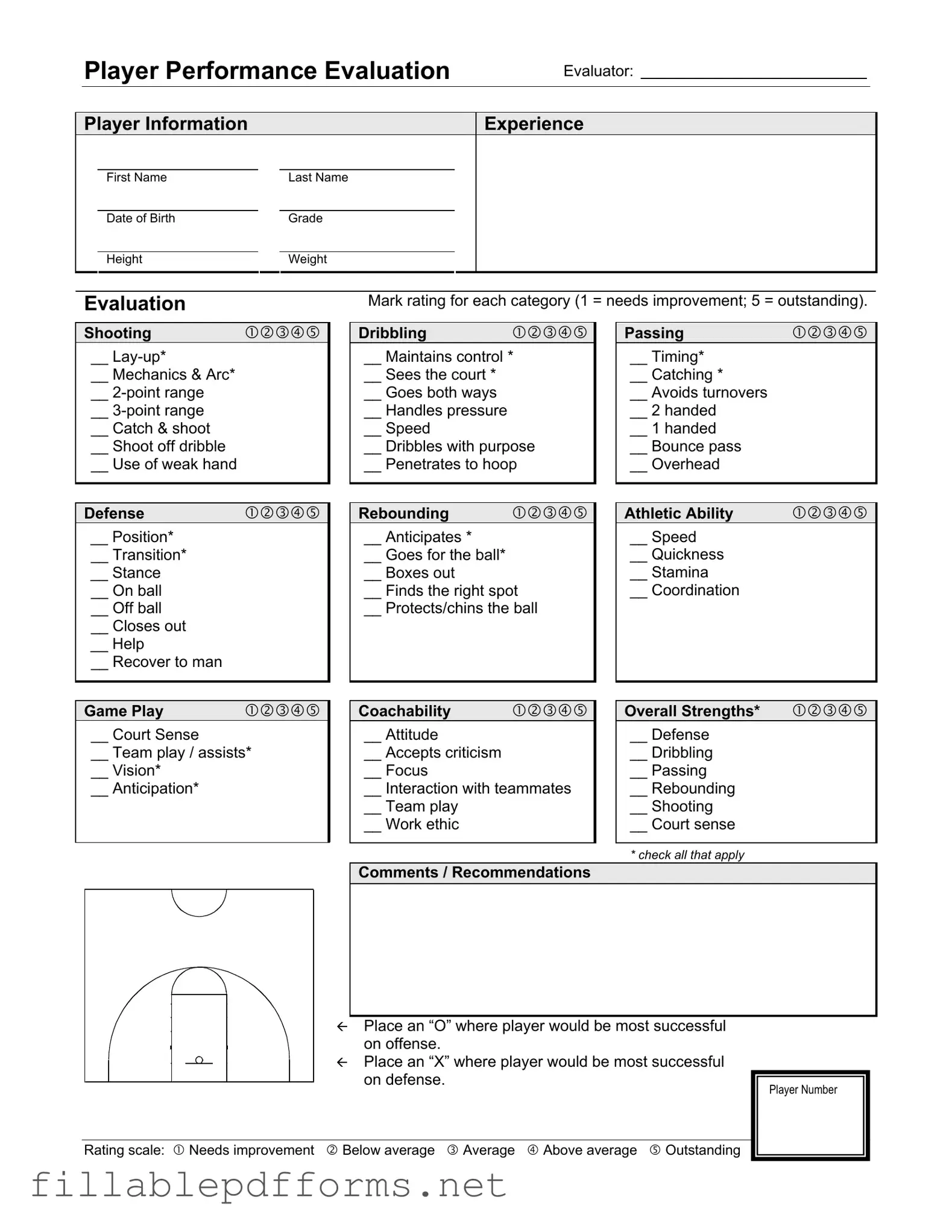Basketball Evaluation PDF Template
The Basketball Evaluation Form is a structured tool designed to assess a player's skills and performance in various aspects of the game. It provides coaches and evaluators with a comprehensive overview of a player's strengths and areas for improvement, facilitating informed decisions regarding player development. By rating specific skills such as shooting, defense, and athletic ability, this form helps in identifying where a player excels and where they may need additional training.
Launch Editor Here
